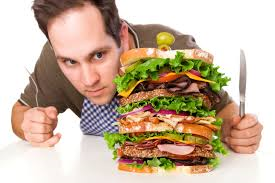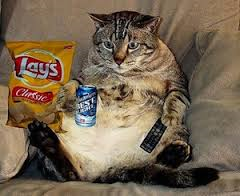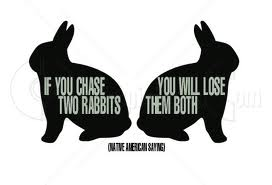“Losing body fat is simple, but it’s definitely not easy.”
This is a quote I heard from nutritional expert Tom Venuto, and the truth behind it cannot be overstated.
You see, fat loss really is (relatively) simple.
Decrease your food intake, increase your activity level (either through strength training, cardio, or simply moving more in your day-to-day activates) and you’ll be right on your way to better health and an all-around leaner physique.
However, despite the simplicity of fat loss, the majority of our society is overweight, out of shape, and generally disgusted with how they look and feel.
What gives?
Why do we as a society have such a hard time losing body fat?
Honestly, I – nor anyone else that I know of – has a clear cut answer to this question.
There are a ton of potential reasons why you may not be achieving your desired fat loss goals, and I’ve outlined what I consider the top 11 of these reasons down below.
This article is quite long so I’m gonna break it in to two parts, with part one covering first six reasons you may not be losing body fat.
1. You’re Eating Too Much Food
I know this is common sense, but eating too much food is the number one reason most people aren’t losing body fat.
In order to stimulate fat loss, you have to be in a caloric deficit, or burning more energy than you’re taking in on a daily basis.
This deficit can be achieved in one of two ways:
-by decreasing food intake
Or
-by increasing your activity level
Ignoring activity for the moment, most people eat WAY TOO MUCH food.
Whether because of oversized portions, processed – and therefore highly addictive – food choices, or a simple lack of awareness of what and/or how much they’re eating, most people are in a caloric SURPLUS, not deficit, and therefore GAINING weight, not losing it.
This isn’t the case for everyone, and if you’re someone who knows how much their eating and/or knows they’re in a deficit, this obviously isn’t the problem.
But for a lot of people, it is, and the first step for them is to simply figure out how much they’re eating, and to create a small caloric deficit (300-500 calories should suffice) in order to stimulate fat loss.
At the end of the day, “You can’t out train a bad diet.”
The energy equation matters.
And if you’re eating too much food – and are therefore not in a caloric deficit – you’re not going to lose any body fat.
2. You’re Not Moving Enough
We live in an EXTREMELY sedentary society.
Seriously, the majority of people – myself included – spend AT LEAST 8 hours per day sitting.
Then, we sit in our cars during the car ride home.
And then, we flop down on the couch with a large pizza, a diet soda (you know, because diet soda is the elixir of life), and turn on the new – and most epic – episode of Game of Thrones.
Obviously, we’re not the most active bunch of people, and even if we’re engaged in some sort of sport or physical activity, it usually only makes up 1-2 hours of an entire 24 hour period.
So, we’re – well, most of us anyway – aren’t expending a lot of energy, which means our caloric deficit (which is required to lose body fat) must come almost 100% from a decrease in food intake.
Not good.
Not only does having a small food intake absolutely suck, but there’s only so far you can decrease calories before you risk malnourishment and – if you’re an athlete – a major drop in performance.
So, being more active– and therefore expending more energy – is obviously a HUGE part of the fat loss equation.
Taking the stairs instead of the elevator, parking farther away from the grocery store, going on a brisk walk during lunch time – these are all simple and realistic ways to boost your activity level.
Is this to say you should never sit around and just relax?
Nope. Relaxation is EXTREMELY important and should be an integral part of your daily schedule.
With that being said, it shouldn’t BE your daily schedule, and I can guarantee that simply moving more –aside from engaging in strength training and cardio – will go a long way in increasing the amount of calories (and therefore body fat) you lose on a daily basis.
3. You Aren’t Strength Training
This really comes down to the fact that strength training – among many other things such as burning calories, increasing insulin sensitivity, releasing fat burning hormones, and increasing your level of awesomeness by about 15,000% – builds muscle (or “tone” as women like to call it).
Muscle increases your metabolic rate, and an increased metabolic rate burns more total calories (and therefore more total body fat) over time.
Honestly, I consider strength training to be far more beneficial for fat loss than cardio, and I think the majority of people should be engaged in some form of strength training (or resistance training, lifting weights…whatever you want to call it) AT LEAST 2-3 x per week.
Does this mean you HAVE to strength train?
No it doesn’t. There are many other forms of exercise, and – I’m going to sound like a broken record here –the best plan on paper won’t work if you don’t follow it.
With that being said, if you enjoy resistance training, DO IT!
A great physique is forged through consistent battle with the iron, and resistance training has a larger impact on your physique than any other form of activity.
4. You’re Not Doing Any Cardio
You don’t have to do cardio to lose body fat, but it’s certainly beneficial.
In fact, for those who have a lot of fat to lose, cardio is almost a necessity.
Why?
For two reasons:
- Like I said before, there’s only so far you can drop calories before you risk malnutrition and/or hinder athletic – or day to day – performance.
- Your body can only handle so much stress at one time, which means constantly increasing the amount of strength training you’re doing can – and probably will – lead to burn out and fatigue.
And that’s where cardio comes in – it allows you to increase your activity level (and therefore the amount of calories you burn on a daily/weekly basis) without much of an impact on recovery.
Plus, it allows you to eat more food, which – let’s be honest here – is NEVER a bad thing.
Which form of cardio should you be doing?
Honestly, it really doesn’t matter.
If you want to do high intensity interval training (HIIT), do high intensity interval training, and if you want to do low intensity steady state cardio (LISS), do low intensity steady state cardio.
Truthfully, all that really matters is that you DO some cardio (if fat loss stalls and you’re not in a position to decrease food intake or increase the frequency/volume of your strength training).
The method you choose really comes down to your goals and personal preference.
And whatever you’re doing – whether it’s sprints for 30 minutes or a brisk walk for 90 –if it’s working, don’t change it.
5. You’re Not Tracking Your Food Intake
First off, tracking your food intake isn’t a necessity.
It’s highly beneficial, and probably IS a necessity for those looking to compete in bodybuilding, but for someone who just wants to get lean (which is completely different than wanting to get “shredded”), creating healthier eating habits and letting their body regulate when they’re hungry or full is probably all that’s needed.
With that being said, there’s no debating that tracking your food intake makes the act of losing body fat – for most people – a thousand times easier, and this is because it provides a system of measurement from which to make adjustments from when fat loss stalls.
Remember, fat loss isn’t linear.
Once you create a caloric deficit – either by decreasing your food intake, increasing your activity level, or both – there’s only so long before your body adapts by decreasing your metabolic rate and becoming more efficient at performing the activities.
What happens?
Fat loss stalls, and a new deficit must be created – by decreasing food intake and/or increasing your activity level once again – in order to re-stimulate progress.
And this is why tracking your food intake is so beneficial, because – I’m not sure who I heard this quote from – “if you don’t know where you’ve been, how can you make an adjustment to get to where you’re going?”
Now, it’s important to understand that although tracking macros and calories in a food app is the quickest, easiest, and most accurate way of regulating food intake (for most people), there are two other methods that work just as well:
- The hand method (palm = a serving of protein, fist = a serving of veggies, a cupped hand = serving of starches, and thumb = a serving of fats), popularized by Precision Nutrition.
- Simply figuring out what you’re eating currently -without tracking – and making an adjustment based on whether or not you lose, gain, or maintain your weight (usually requires you to eat the same things every day).
Does it really matter which method you choose?
Nope. Experiment with all of them and figure out what works best for you.
At the end of the day, just understand that tracking your food intake (no matter which method you choose) – although not a necessity – will go a long way in helping you reach your ideal physique.
6. You’re chasing too many goals
“He who chases two rabbits catches neither.”
This is a really good quote.
Not because it’s necessarily true (I could totally catch both rabbits), but because it does a good job of illustrating the importance of choosing ONE GOAL TO CHASE AFTER AT A TIME.
In most cases, you won’t be able to build muscle and lose fat simultaneously.
Building muscle requires a caloric surplus, losing body fat requires a caloric deficit, so it’s – in most cases – physiologically impossible to do both at the same time (unless you’re completely new to training or have been on a very LONG layoff).
So, you have to figure out which goal is most important.
Generally, I recommend losing body fat first, and then focusing on building muscle (while minimizing fat gain).
Do you have to do it this way?
No you don’t, and there’s definitely some merit to building a your physique before you go and try to show it off.
With that being said, whichever way you decide to do it, pick one goal and stick with it.
Remember, chasing two goals at once – in most cases – will get you nowhere.
It’s better to put 100% effort in to one goal than put 50% in to both.
And you should only move on to the next goal once you’ve completely accomplished the first.
Wrapping Up
There you have it guys – the first six reasons you may not be losing body fat.
Stay tuned for part two of the article, which should be dropping sometime early next week!
Like What You See?
Get the Smoot Fitness Guide to Getting Stronger - FREE.









Leave a Reply